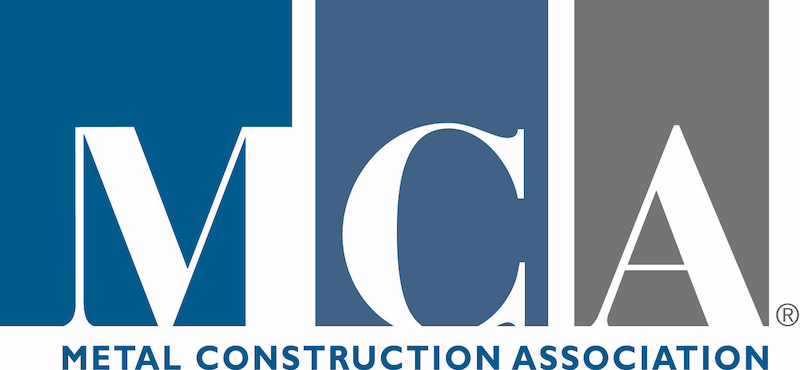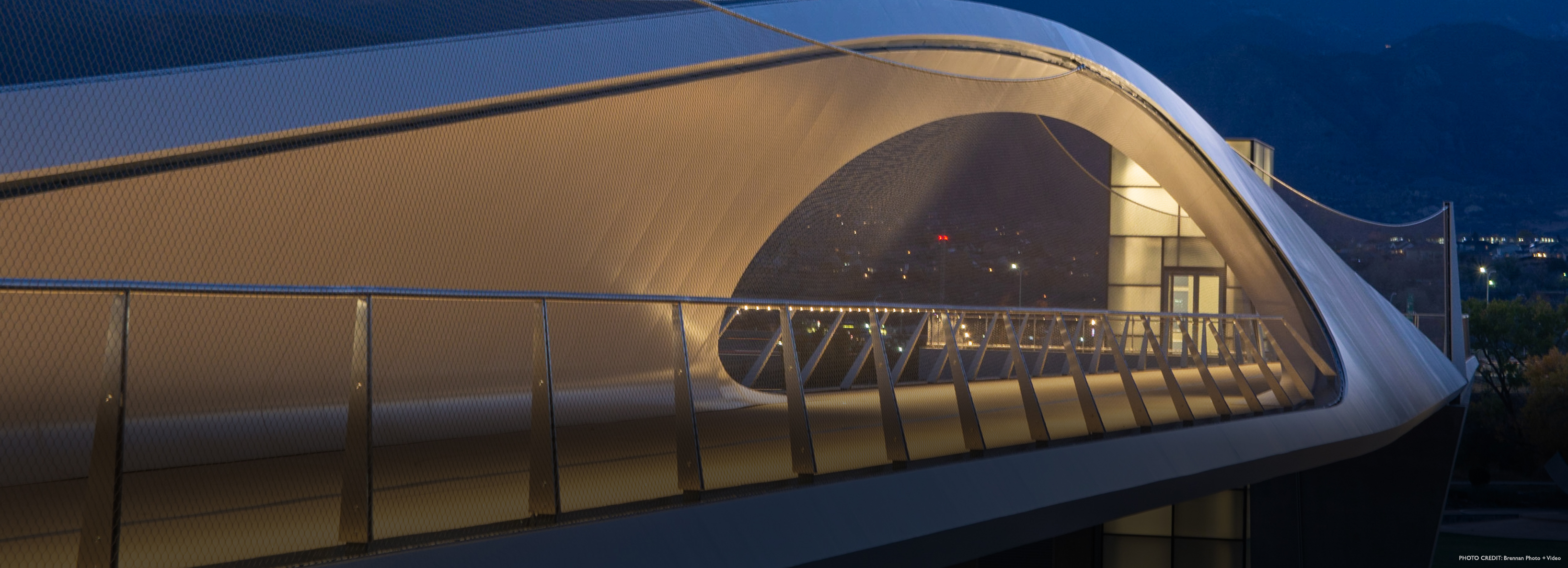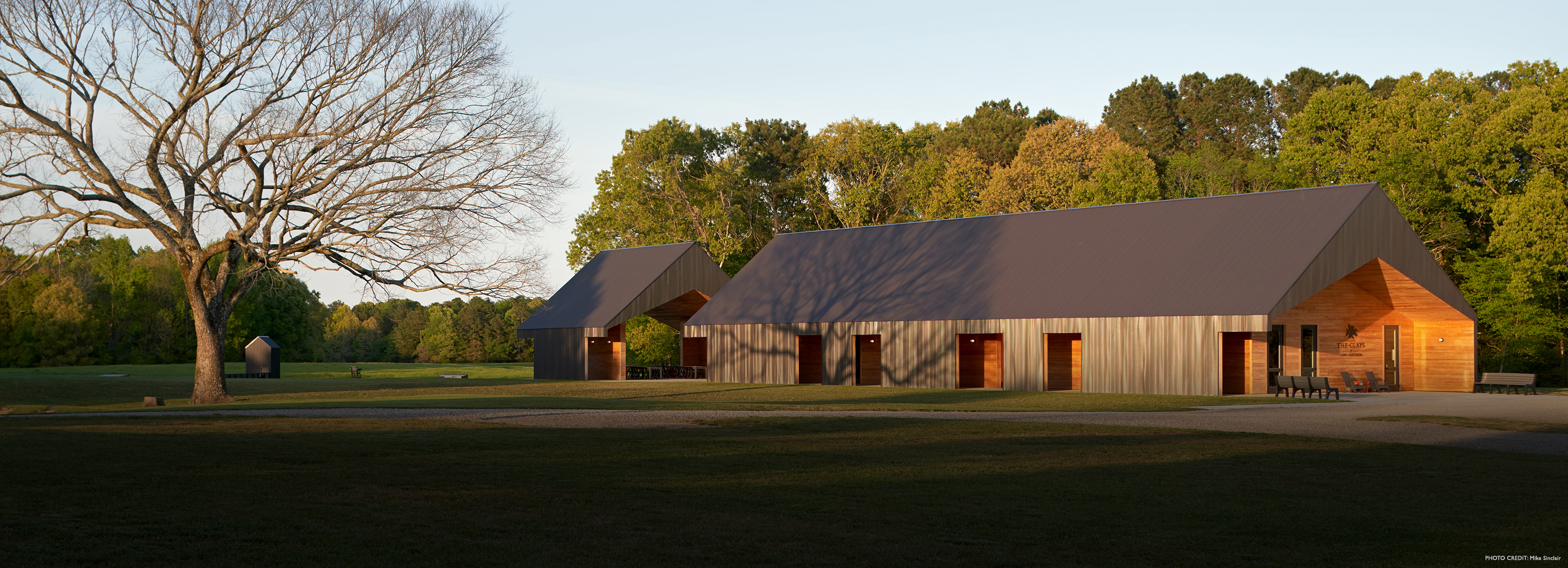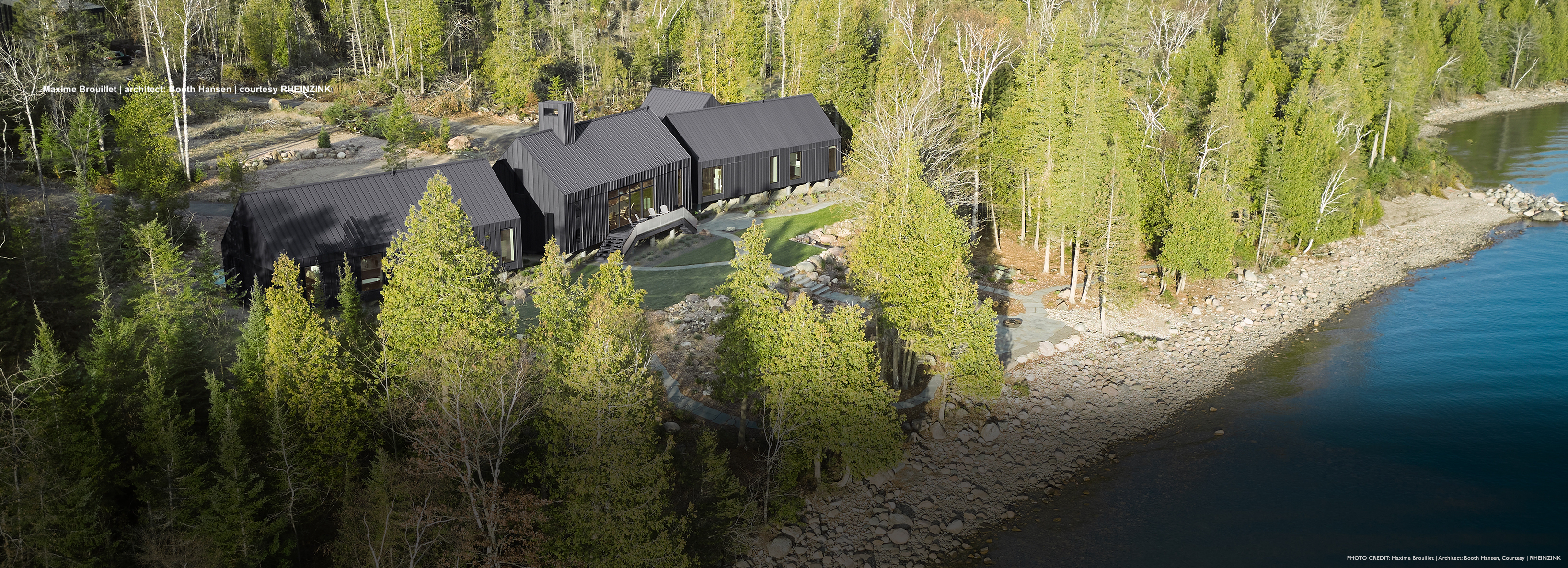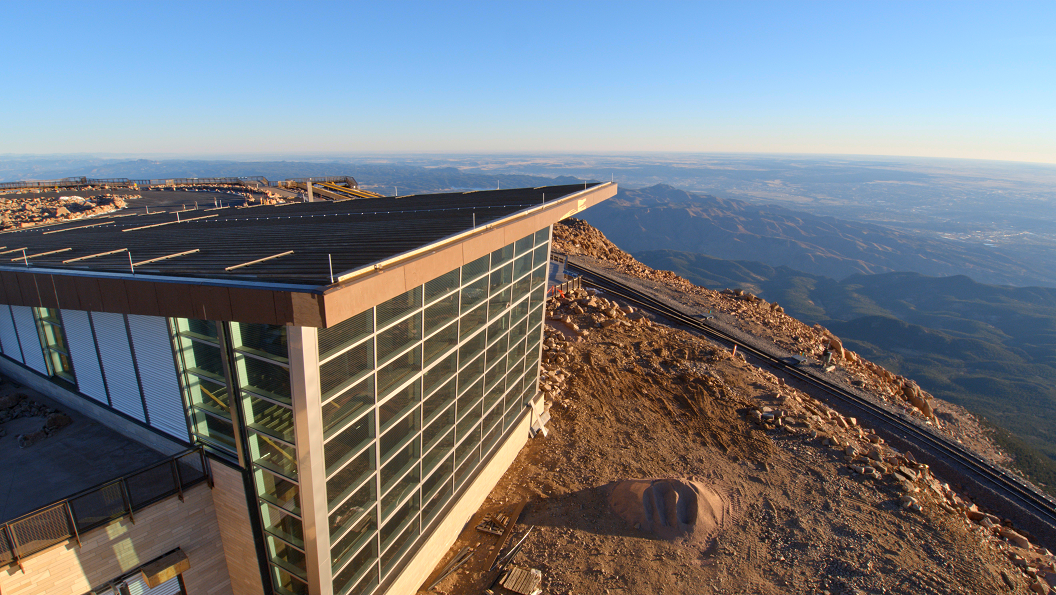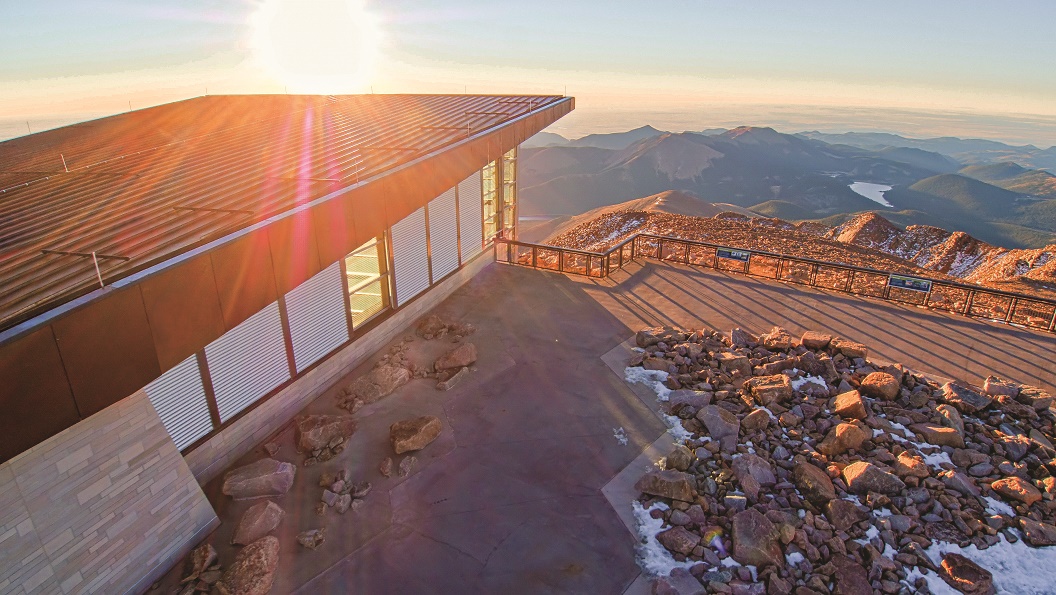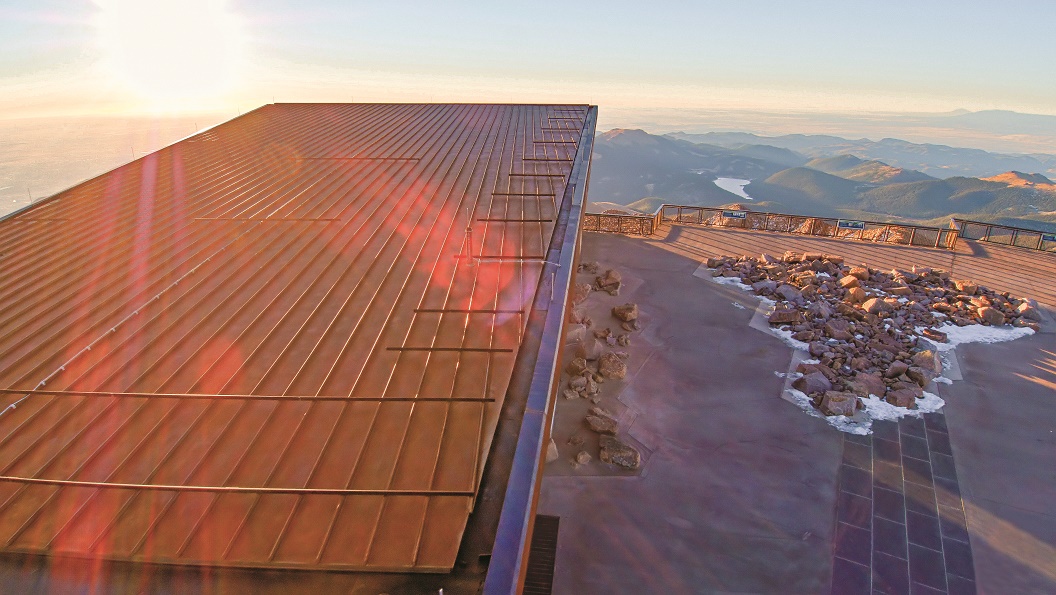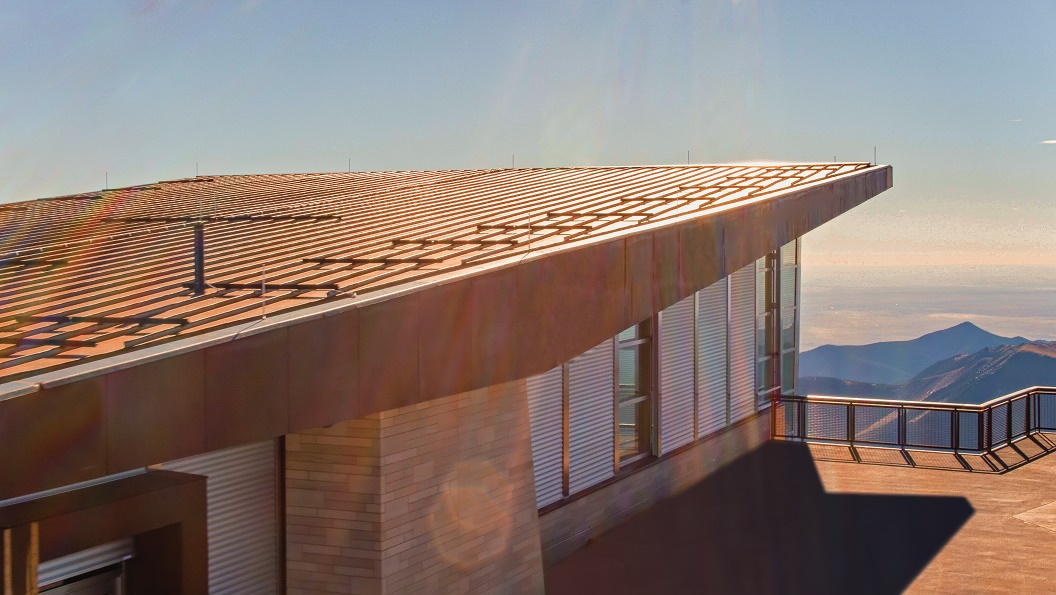Pikes Peak Summit Complex
Metal Roofing, Meeting the Living Building Challenge and Load Requirements at 14,114 Feet
View Case Studies
At this elevation, it’s difficult to walk without getting out of breath due to the high elevation and low air pressure. The area is prone to heavy snows, even in summer, and the near year-round weather makes for a short construction window. Then there’s the wind – with no obstruction at this elevation, wind events can reach speeds as high as 170 mph. Due to the length of the panels (115 feet), a crane would have to be used to lift the roll former into position next to the roof so panels could be formed straight onto the roof. The roofer, Weathercraft of Colorado Springs, knew Drexel had a product that could probably meet the special load requirements for the Pikes Peak Summit Complex. “Because of some unusually high wind testing that Drexel has with a custom clip-on our DMC200S.
I was able to step in and take over the project,” explained the Drexel Metals Technical team.But before their products could be considered, Drexel had to provide project-specific engineering to show that the panels could stand up to the extreme conditions on Pikes Peak. Additionally, Living Building Challenge (LBC) data had to be submitted for all of the roof system components (sealants, butyl, clips, roof panel, backplates, seam sealant, snow guards, and sheets) to make sure they met the LBC’s stringent requirements. Drexel compiled all of the necessary documents within a month to meet the client’s, architect’s, and GC’s tight timeline. INSTALLATION PROCESSThe roof has a 1⁄12 pitch and is shaped like a trapezoid, with panels as long as 115'. The panels tie into a gutter that borders the perimeter of the roof, which is made from ¼" plate to support the snow load. The project started with high-density EPS insulation with ¾" plywood mechanically attached to structural metal decking. Weathercraft then installed one layer of Metshield® ice and water shield and completed the trim details that tied into the gutter system. Their next step was marking the clip layout on the underlayment. This was very important because fixed clips had to be used on part of the roof. The clips would provide a point of fixity for the metal panels, allowing thermal movement toward the eave and peak line. After marking the clip layout, a crane lifted the roll former onto the roof so the Drexel panels could run the full length of the roof system. Weathercraft installed the fixed clips and continuous clips. The roof panels were seamed as they were being installed to avoid any issues if a wind event at this elevation were to occur. The peak detail was installed to complete the roof, and finally, an S-5 ColorGard snow guard system was installed.
LOCATION
1275 Ritner Highway, Colorado Springs, CO, United States
BUILDING OWNER
Metal Roofing, Meeting the Living Building Challenge and Load Requirements at 14,114 Feet
CONTRACTOR
GE Johnson / Installer Weathercraft of Colorado Springs
SIZE
6,200 Sq Ft
DATE COMPLETED
Fall 2021
